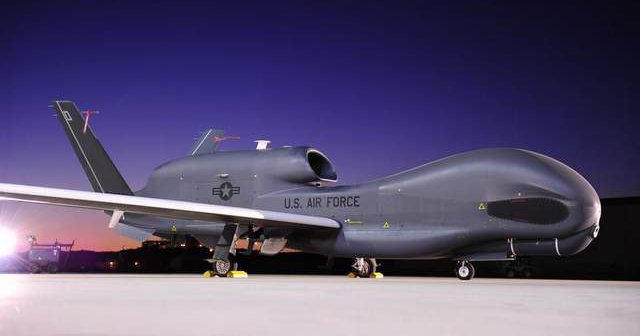Northrop Grumman is working through internal testing to upgrade sensors for its embattled Global Hawk reconnaissance aircraft, trying to keep a variant of it alive while the Air Force continues to target it for cuts.
The Air Force says its manned Cold War-era U-2s can do the intelligence, surveillance and reconnaissance job with a better sensor payload than the new Block 30 variant of the massive, high-altitude unmanned Global Hawks.
Tom Vice, head of Northrop Grumman’s Aerospace Systems sector, told reporters Aug. 20that the contractor is talking with the Air Force and working through internal research and development on a universal payload adapter, which could attach the U-2’s sensors to the Global Hawk.
“This is a mature technology,” Vice said, highlighting that it will be able to connect future sensors as well as those currently in the Air Force’s inventory.
The Air Force has called this adapter “feasible,” stating that it will cost about $487 million. It would take three years to develop, integrate and test, followed by two years of production for the 18 Global Hawk Block 30s and ground equipment, according to an April report from the Air Force to congressional defence committees.
The adapter would let the Global Hawk carry either the Optical Bar Camera or Senior Year Electro-Optical Reconnaissance System-2b sensors, in addition to its Airborne Signals Intelligence Payload, according to the report. These upgrades would put the Global Hawk more on par with the U-2’s sensor capabilities — increasing the detail and overall distance that the sensors can oversee.
Without the adapter, the Air Force said that it would cost more than $800 million to upgrade the Block 30’s sensors to the U-2’s level.
The Air Force has repeatedly said it prefers the U-2 fleet over Block 30 Global Hawks because it can fly at a higher altitude, letting it go deeper into adversary territory to collect images over longer ranges.
“The combined advantages of the aircraft and sensors provide increased stand off against potential adversary threat systems,” the Air Force’s report states.
The two fly at a similar cost, with the Global Hawk Block 30’s cost per flight hour at $33,564 and the U-2’s at $33,407, according to the report.
The Block 30 was originally supposed to replace the U-2 by 2016. While the Air Force is pressing for the Global Hawk fleet to be retired, lawmakers are keeping them in the air.
The House Armed Services Committee’s markup of the fiscal 2014 defence spending bill directs the service to keep the aircraft flying until at least December 2016.
Source: Air Force Times

